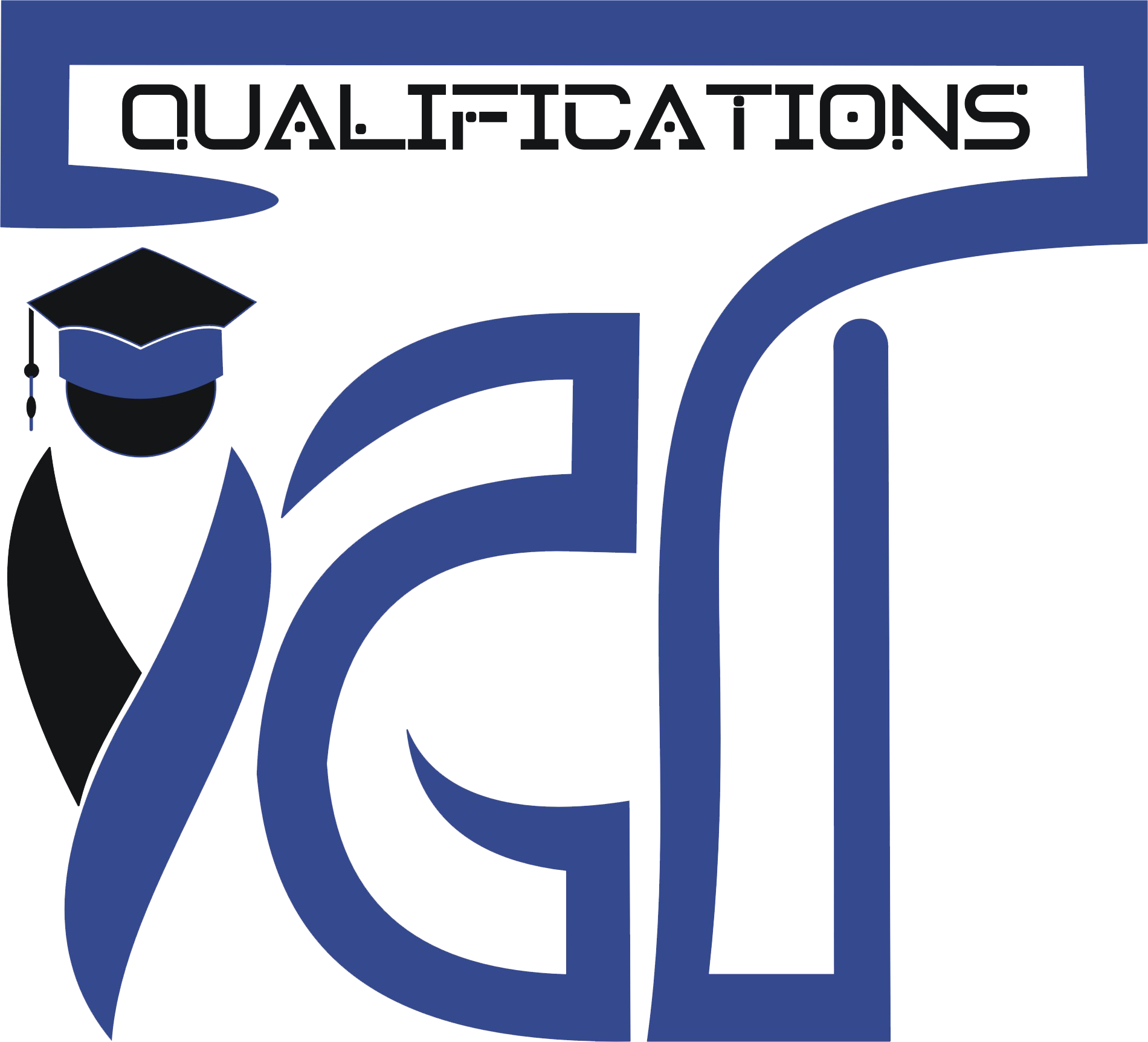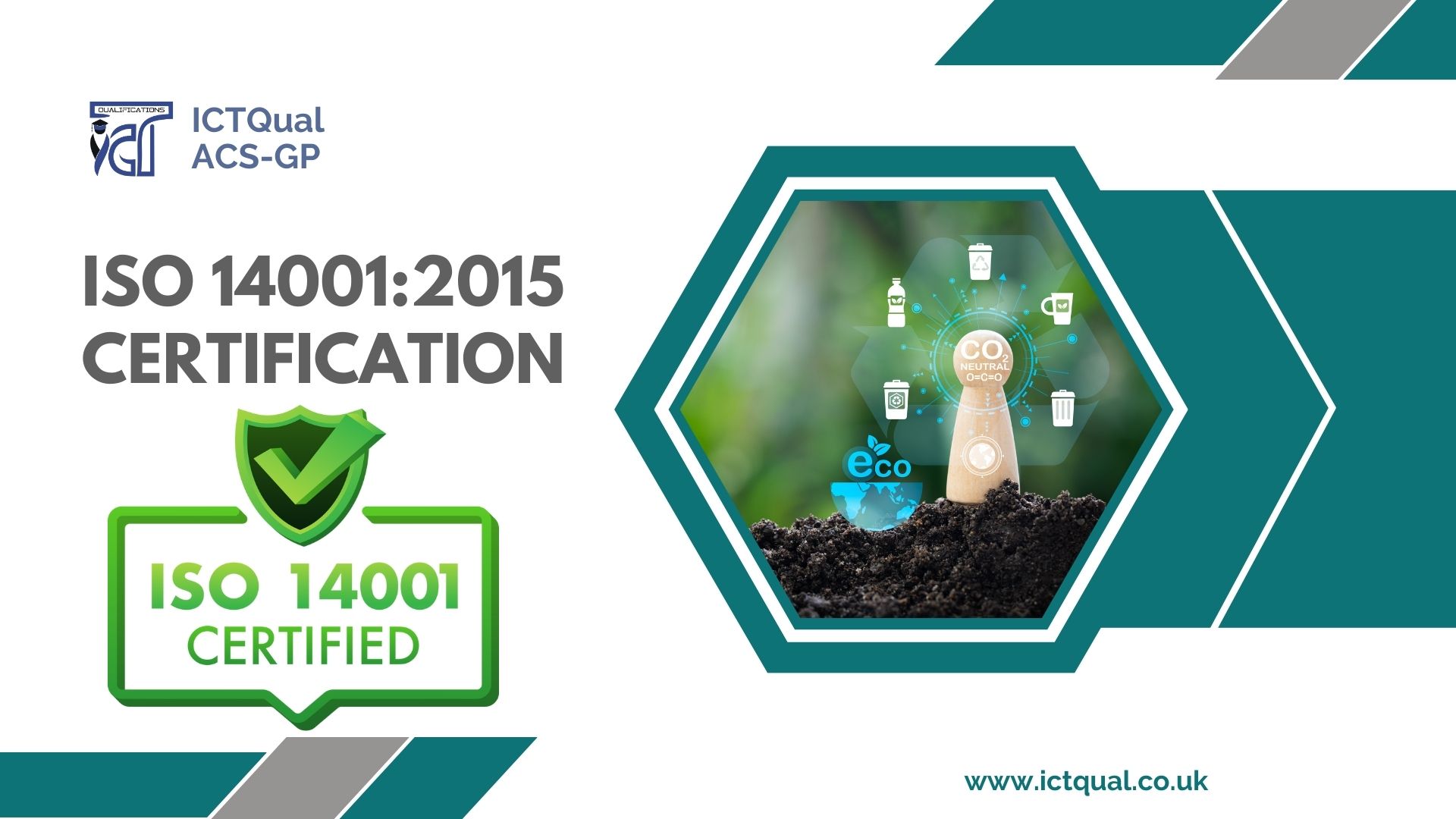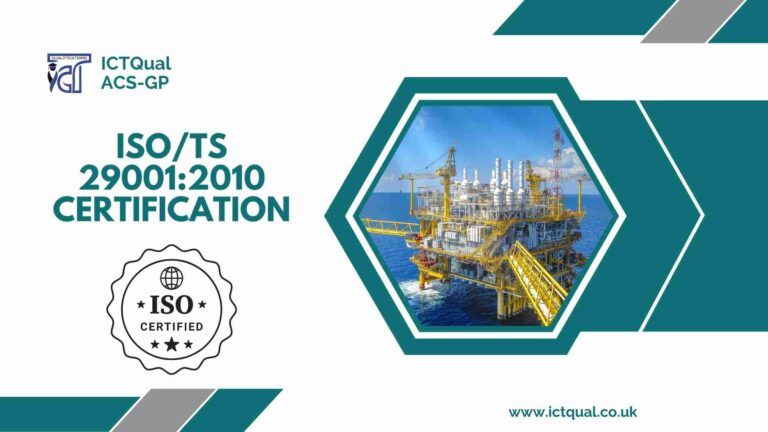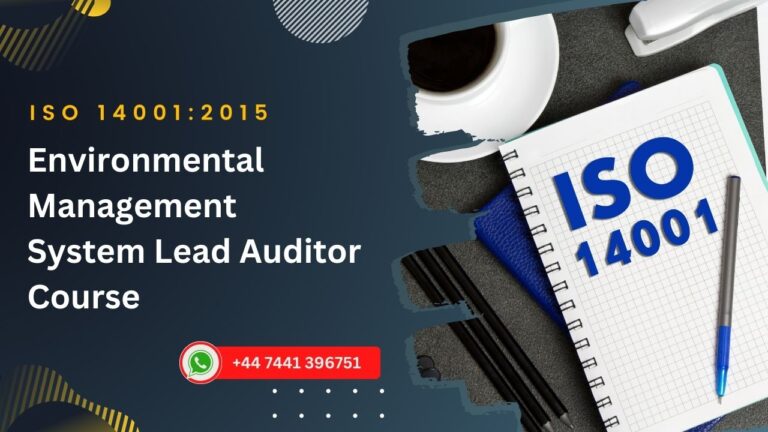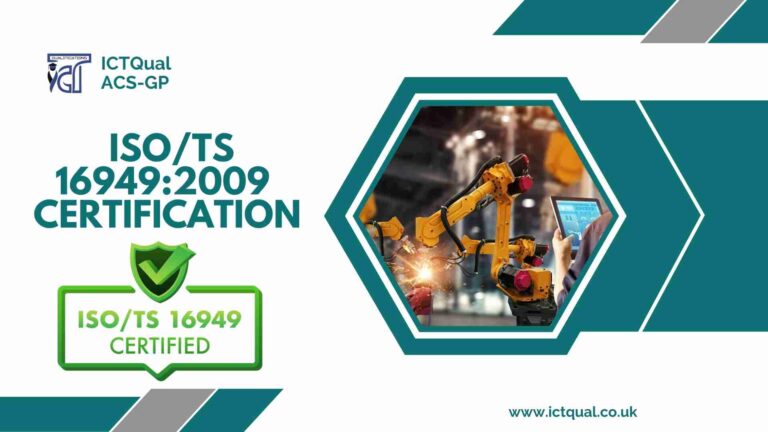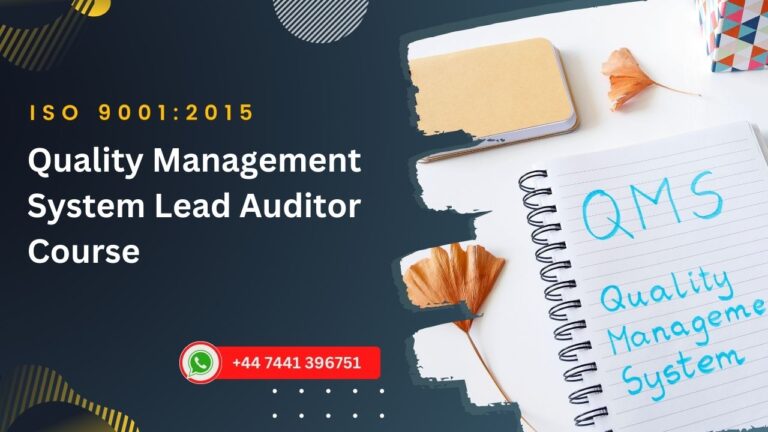Attention all companies! Are you looking to enhance your environmental performance and demonstrate your commitment to sustainability? Achieving ISO 14001:2015 certification can help you achieve these goals! ISO 14001:2015 is an international standard for environmental management systems that provides a structured framework for managing environmental impacts. By achieving certification, you can improve your efficiency, enhance your reputation, and access new markets. Don’t miss out on this opportunity to position your company as a leader in environmental responsibility. Contact us today to learn more about ISO 14001:2015 certification for your company!
ICTQual is Exclusive partner of ACS-GP and providing services for company registration with ISO in following ISO Standards
ISO 14001:2015 Certification
If you’re looking to enhance your company’s environmental sustainability and showcase your commitment to reducing your environmental impact, ISO 14001:2015 certification is an excellent place to start. This internationally recognized certification demonstrates your company’s dedication to environmental responsibility and can help you meet regulatory and customer requirements related to environmental management.
This Standard is developed by the International Organization for Standardization (ISO) in 1996, ISO 14001:2015 is a set of standards that provide a framework for companies to develop and implement an EMS. An EMS is a systematic approach to managing environmental impacts that integrates environmental considerations into all aspects of a company’s operations.
The goal of an EMS is to help companies identify and manage their environmental impacts in a proactive and effective way, while also reducing costs, improving efficiency, and enhancing their reputation as environmentally responsible organizations. By establishing clear environmental objectives and targets, implementing procedures to control significant environmental impacts, and regularly reviewing and improving the EMS, companies can achieve their environmental goals while also enhancing their bottom line.
Benefits of ISO 14001:2015 Certification for Companies
ISO 14001:2015 certification provides a range of benefits for companies of all sizes and industries. Here are some of the key benefits of obtaining ISO 14001:2015 certification:
Improved Environmental Performance
By implementing an environmental management system (EMS) and achieving ISO 14001:2015 certification, companies can improve their environmental performance by reducing their impact on the environment, conserving resources, and preventing pollution. This can lead to cost savings, regulatory compliance, and enhanced public image.
Increased Efficiency
The EMS implemented for ISO 14001:2015 certification can also help companies identify inefficiencies in their operations and implement improvements that lead to cost savings and enhanced efficiency. This can include reducing waste, optimizing energy and water use, and improving supply chain management.
Compliance with Regulations
ISO 14001:2015 certification can help companies ensure compliance with environmental regulations and legal requirements at the local, national, and international levels. This can help companies avoid costly fines and penalties for non-compliance.
Enhanced Reputation
ISO 14001:2015 certification can enhance a company’s reputation as an environmentally responsible organization. This can lead to improved customer loyalty, increased employee engagement, and a competitive advantage in the marketplace.
Access to New Markets
Many companies require their suppliers to be ISO 14001:2015 certified, which can open up new business opportunities for companies that achieve certification. In addition, ISO 14001:2015 certification can be a requirement for bidding on certain contracts or tenders.
Improved Risk Management
By implementing an EMS and achieving ISO 14001:2015 certification, companies can identify and manage environmental risks more effectively. This can help companies avoid incidents that could harm the environment or pose a risk to public health and safety.
Overall, ISO 14001:2015 certification can help companies achieve their environmental and business goals, while also enhancing their reputation and opening up new business opportunities.
Key Requirements for ISO 14001:2015 Certification
To achieve ISO 14001:2015 certification, companies must meet a set of key requirements outlined in the standard. These requirements include:
Developing an Environmental Policy
Companies must develop a written environmental policy that outlines their commitment to environmental responsibility and their approach to managing environmental impacts.
Conducting a Environmental Aspects and Impacts Assessment
Companies must identify and evaluate the environmental impacts of their operations, products, and services. This assessment should include the identification of significant environmental aspects, such as energy consumption, waste generation, and greenhouse gas emissions.
Establishing Environmental Objectives and Targets
Companies must establish environmental objectives and targets that are measurable, achievable, and relevant to their operations. These objectives and targets should be aligned with the company’s environmental policy and designed to reduce or prevent significant environmental impacts.
Developing and Implementing an Environmental Management System (EMS)
Companies must develop and implement an EMS that is designed to manage their environmental impacts effectively. The EMS should include procedures for identifying and controlling environmental impacts, as well as processes for monitoring and measuring environmental performance.
Providing Training and Awareness
Companies must provide training and awareness programs for employees to ensure they understand the company’s environmental policy, objectives, and targets, as well as their roles and responsibilities in achieving them.
Conducting Internal Audits
Companies must conduct regular internal audits of their EMS to ensure it is operating effectively and in compliance with ISO 14001:2015 requirements.
Conducting Management Reviews
Companies must conduct regular management reviews of their EMS to ensure it is meeting its objectives and targets, and to identify opportunities for improvement.
By meeting these key requirements, companies can achieve ISO 14001:2015 certification and demonstrate their commitment to environmental responsibility.
The ISO 14001:2015 Certification Process
The ISO 14001:2015 certification process involves several steps that companies must follow to achieve certification. These steps typically include:
Gap Analysis
Before beginning the certification process, companies should conduct a gap analysis to determine how closely their existing environmental management practices align with the ISO 14001:2015 standard. This analysis can identify areas for improvement and help companies develop a plan for achieving certification.
Develop an Environmental Management System
Companies must develop an EMS that meets the requirements of the ISO 14001:2015 standard. This involves identifying and evaluating environmental impacts, establishing objectives and targets, implementing procedures for managing environmental impacts, and providing training and awareness programs for employees.
Conduct Internal Audits
Companies must conduct regular internal audits of their EMS to ensure it is operating effectively and in compliance with the ISO 14001:2015 standard.
Choose a Certification Body
Companies must choose a certification body to conduct an external audit and assess their EMS against the requirements of the ISO 14001:2015 standard.
External Audit
The certification body will conduct an external audit to assess the company’s EMS and determine whether it meets the requirements of the ISO 14001:2015 standard.
Corrective Actions
If the company’s EMS does not meet the requirements of the ISO 14001:2015 standard, the certification body will provide a report outlining areas for improvement. The company must then take corrective actions to address these issues.
Certification
If the company’s EMS meets the requirements of the ISO 14001:2015 standard, the certification body will issue a certificate of conformity, which the company can use to demonstrate its environmental management capabilities.
Surveillance Audits
To maintain certification, companies must undergo periodic surveillance audits to ensure they continue to meet the requirements of the ISO 14001:2015 standard.
By following these steps, companies can achieve ISO 14001:2015 certification and demonstrate their commitment to environmental responsibility.
Integrating ISO 14001:2015 into Company Operations
Integrating ISO 14001:2015 into company operations involves implementing an environmental management system (EMS) that is aligned with the requirements of the standard. Here are some key steps to integrate ISO 14001:2015 into company operations:
Establish a Cross-Functional Team
A cross-functional team of employees should be established to oversee the development and implementation of the EMS. The team should include representatives from all levels of the organization, including management, operations, and environmental health and safety.
Conduct an Environmental Aspects and Impacts Assessment
A comprehensive assessment of the environmental aspects and impacts of the company’s operations should be conducted to identify opportunities for improvement and set environmental objectives and targets.
Develop and Implement an EMS
The EMS should be developed and implemented to manage the company’s environmental impacts effectively. The EMS should include procedures for identifying and controlling environmental impacts, as well as processes for monitoring and measuring environmental performance.
Train and Educate Employees
All employees should receive training and education on the company’s environmental policy, objectives, and targets, as well as their roles and responsibilities in achieving them. This can be accomplished through workshops, training sessions, and regular communication.
Implement Environmental Controls
Environmental controls should be implemented to minimize the company’s environmental impacts. This may include reducing energy and water consumption, minimizing waste generation, and reducing greenhouse gas emissions.
Monitor and Measure Environmental Performance
Regular monitoring and measurement of environmental performance should be conducted to ensure the company is meeting its objectives and targets. This can be accomplished through audits, inspections, and data analysis.
Continuously Improve
The EMS should be continuously improved through regular management reviews, internal audits, and corrective actions. This will ensure the company is continuously improving its environmental performance and meeting the requirements of ISO 14001:2015.
By integrating ISO 14001:2015 into company operations, companies can manage their environmental impacts effectively, achieve regulatory compliance, and enhance their reputation as environmentally responsible organizations.
Maintaining ISO 14001:2015 Certification
Maintaining ISO 14001:2015 certification is just as important as achieving it. Once a company has achieved certification, they must continue to meet the standard’s requirements and demonstrate ongoing improvement in their environmental performance. Here are some key steps to maintaining ISO 14001:2015 certification:
Conduct Regular Internal Audits
Companies should conduct regular internal audits of their environmental management system (EMS) to ensure it remains effective and compliant with the ISO 14001:2015 standard. This will help identify areas for improvement and ensure that the EMS continues to meet the company’s objectives and targets.
Implement Corrective Actions
If any non-conformities or deviations from the standard are identified during an internal audit or management review, the company should implement corrective actions to address these issues and prevent them from recurring.
Monitor and Measure Environmental Performance
Companies should regularly monitor and measure their environmental performance to ensure they are meeting their objectives and targets, and to identify opportunities for improvement. This can include tracking energy and water usage, waste generation, and greenhouse gas emissions.
Update the Environmental Management System
The EMS should be updated regularly to reflect changes in the company’s operations, environmental risks, and regulatory requirements. This will help ensure the EMS remains relevant and effective in managing environmental impacts.
Conduct Management Reviews
Companies should conduct regular management reviews of their EMS to assess its effectiveness, identify opportunities for improvement, and ensure it remains aligned with the company’s objectives and targets.
Maintain Employee Awareness and Training
Employee awareness and training programs should be maintained to ensure that all employees are aware of the company’s environmental policy, objectives, and targets, and understand their roles and responsibilities in achieving them..
By following these key steps, companies can maintain their ISO 14001:2015 certification and continue to improve their environmental performance over time.
